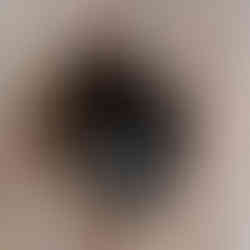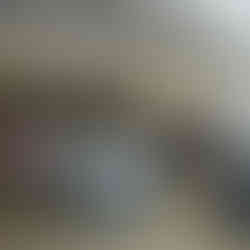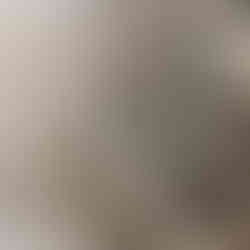
In this our 5th (but not quite final – see more below) in our 5-part series on our gardens as critically important habitat in a wounded world, and we gardeners as powerful land stewards and biodiversity protectors, we visit a remarkable public garden in California during California Native Plant Week. The Nature Gardens at the Natural History Museum of Los Angeles County are testament to just how much one garden can do to turn back time and help create habitat even in downtown LA where once a parking lot sat barren and overheated. We’re joined today by native plant expert Carol Bornstein, Director of the Nature Gardens, and by Lila Higgins, Senior Manager of Community Science there. With hard data collected over the last 7 years, and huge hearts for this work, Carol and Lila bring us up to speed on what the Nature Gardens and the habitat they provide can offer to us all.
The 3.5 acre gardens were conceived and planted on what was once mostly asphalt parking lot. "The Natural History Museum is L.A.’s oldest museum building, and the present-day anchor of an emerging cultural, educational, and entertainment hub in Exposition Park. NHM visitors are awed by extraordinary specimens and the stories behind them. In addition to sharing the history of the planet, NHM also explores a more local transformation: Becoming Los Angeles, the outdoor Nature Gardens, and the Nature Lab look at how environment and people, past and present, interact in L.A. The unifying theme in these indoor and outdoor experiences is the interplay of nature and culture, in Los Angeles and the world." The gardens put living nature into the life and science of this historic Natural History Museum.
Carol and Lila join us today with the help of audio producer Joanna Clay from the Nature Gardens.
"The landscape architect, Mia Lehrer and Assoc, and museum staff collaborated very deeply on the original planting palette for the entire garden - it was master planned - and every plant that was chosen to be a part of this garden was chosen for the contribution it would make to providing habitat"
Carol Bornstein, Director of The Nature Gardens, NHMLA
The gardens were designed and planted by Mia Lehrer and Associates (a firm now known as Studio-MLA) in 2013 in collaboration with science and education staff at the Natural History Museum of LA County specifically to create habitat by way of water, rocks, plants, and soils for native wildlife of Los Angeles. As Carol notes, "were not intended to exclusively reintroduce native plants for native wildlife habitat but rather to use both natives and other climate-appropriate exotics to create habitat for wildlife in an urban setting. A subtle but important distinction. In other words, this was not viewed as a restoration project." The resulting insect, reptile, mammal and bird diversity making this oasis home is reminder to us all of the power we have to create habitat for all on our own patches of earth.
Lila reports that: "We’ve had 305 species of insects observed in the nature gardens through this entomological survey, and kind of to split that up that’s 9 species of dragonflies and damselflies, which mostly rely on the pond because dragonflies and damselflies lay their eggs in water, so their babies live underwater, so putting in that water source really helped to increase the biodiversity in the garden in relation to dragonflies and damselflies; we’ve had 14 species of butterflies found in the garden, 19 species of hover flies aka flower flies, 45 species of scuttle flies, so these are in the true fly group, aka as hump back flies, and then 16 species of bees, and 34 species of beetles - my favorite group of insects."
For more information on the Nature Gardens, please see the museum’s website at nhm.org – where you can follow the data collections and live cams in the pond, and in the gardens.
You should also check out the new book co-authored by Lila Higgins, and on which Carol served as one of several science editors, "Wild LA -explore the amazing nature in and around Los Angeles" out now from Workman Press. “Alligator lizards and free-flying parakeets are just the beginning.”
While this was meant to the fifth and final episode in our deep dive series into our gardens as important and sustaining habitats for the wildlife of our native areas, and we gardeners as important stewards of biodiversity I just couldn’t help myself but extend the exploration one more – because she fit in so beautifully. You might know of the Irish plantswoman and garden designer Mary Reynolds from the movie Dare to be Wild, of which her surprising Gold Medal winning garden design at the Chelsea Flower Show and her passion for nature and gardens is the focus, or you might know her as author of "The Garden Awakening." In either event, I think you will really enjoy hearing her gardenlife journey and her concept for gardens as arks of hope for wildlife the globe over.
THINKING OUT LOUD this week..
Ok so thinking out loud here – you want to know what I’m loving the very most about this conversation with Carol and Lila? It’s this: we're speaking so little about pollinators. Now that may sound like a funny thing to say, but if you’ve been listening to the conversations of this whole series, you will have picked up that my feelings are this: When we talk about habitat and biodiversity loss, it’s not about one subset of life – animals we humans call pollinators. We do not need this reduced to sound bites, we are fully capable of grasping both the nuance and the complexity of our damage to these systems and our capacity for helping to restore balance. And it’s not about us doing this because it benefits us as humans – that the loss of pollinators will severely impact our food crops for instance. We care and can act based solely on the fact that it’s the right thing to do, because we love these fellow planet mates.
The problem we’ve created is not simple, and the answer is not simple. But it starts simply – with starting from where we are, doing what we can – garden variety every day actions and up….it is about the monarchs, and the hummingbirds and the honeybees – but as Carol and Lila demonstrate – it’s also about lizards, and spiders, beetles and bats, it’s about flies and sand wasps we might be preconditioned to be scared of but which are in fact gentle and have the most beautiful iridescent eyes….We can do this – we most especially can do this….
I’ve had so many wonderful comments and notes about the impression this habitat series has made on all of you – and me too – how it’s opened your thinking and inspired your own gardening. You will hear more about this at the end of this episode, but I just couldn’t help myself – I’ve added one more episode to what was supposed to be a series of 5. It was too hard to stop – because in reality – all gardens are about habitat, right? For us, for our sanity, for wildlife, and plants, and well – engaging in life more fully and richly on all levels.
It is because of you donors out there that I was able to put my head around curating such a series and the forethought, planning, scheduling and communicating this involves. So thank you to each and every one of you who showed us donors as well as listeners.
We have a lot of ideas budding here at Cultivating Place, and we need listener support to help us out. If you want to be the gardener to our garden, please make a tax-deductible donation by clicking the link that says SUPPORT in the upper right hand corner of any page at Culitvatingplace.com - while most people give as sustaining donors of $20 a month, any size one-time gift or recurring monthly donation goes along way to making these important conversations possible. Thank you!

CONSIDER TAKING PART IN THE CITY NATURE CHALLENGE THIS YEAR!
WAYS TO SUPPORT CULTIVATING PLACE
SHARE the podcast with friends: If you enjoy these conversations about these things we love and which connect us, please share them forward with others. Thank you in advance!
RATE the podcast on iTunes: Or wherever you get your podcast feed: Please submit a ranking and a review of the program on Itunes! To do so follow this link: iTunes Review and Rate (once there, click View In Itunes and go to Ratings and Reviews)
DONATE: Cultivating Place is a listener-supported co-production of North State Public Radio. To make your tax-deductible listener contribution – please click the donate button below. Thank you in advance for your help making these valuable conversations grow.
Or, make checks payable to: North State Public Radio - Cultivating Place
with Cultivating Place in the memo line, too
mail to: California State University, Chico
400 W. First Street
Chico, CA 95929-0999

















































